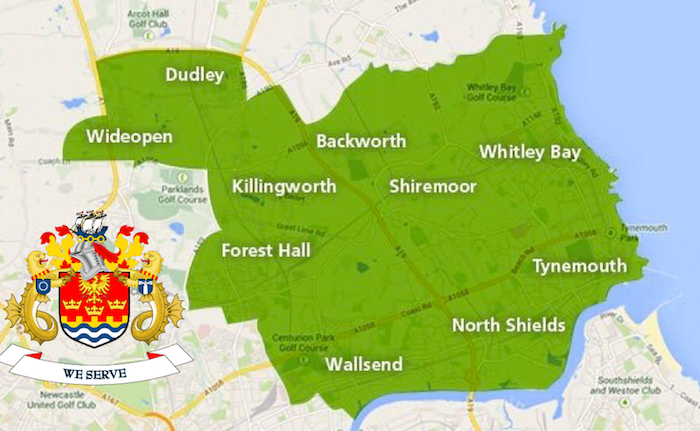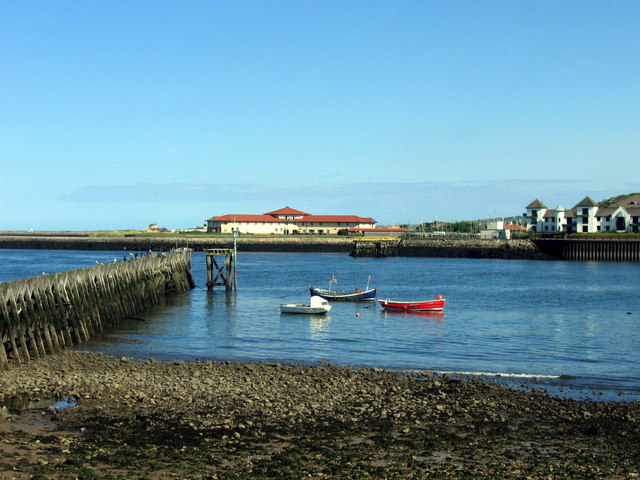Topics > Tyne and Wear > North Tyneside > North Shields > North Shields, 1848
North Shields, 1848
SHIELDS, NORTH, a sea-port and market-town, in the parish, union, and borough of Tynemouth, E. division of Castle ward, S. division of Northumberland, 8 miles (E.N.E.) from Newcastle-upon-Tyne, and 276 (N. by W.) from London; containing 25,808 inhabitants, of whom 7,509 are in the township. This place, at the commencement of the 13th century, consisted only of a few fishermen's huts or "shielings," which occupied the site of part of the present town, and from which it appears to have derived its name. In the reign of Edward I., the prior of Tynemouth began to erect houses here, established a market, and encouraged the settling of traders; but the burgesses of Newcastle, who possessed the exclusive traffic of the river Tyne, jealous of this encroachment on their privileges, commenced a suit in the court of king's bench against the prior, who, by a judgment of the court, was compelled to relinquish his enterprise. Retiring therefore within the precincts of the priory at Tynemouth, he there carried his purpose into effect, and formed a harbour for trading-vessels, which from that circumstance is still called the Prior's haven. The town of Shields relapsed into its previous obscurity, and remained in a state of insignificance till about the middle of the 17th century, when Cromwell made considerable efforts to place it in that rank to which, from its advantageous situation, it was so obviously entitled. For this purpose he caused commodious quays to be built, granted a charter for a weekly market, and afforded every facility for the promotion of trade; but it was not till about the close of the century that the restrictions on the commerce of the town were effectually removed, and the place began to prosper. From that period its advance has been rapidly progressive, its trade has greatly increased, and since the commencement of the present century, its population has been nearly doubled.
The town is situated on the north bank of the river Tyne, near its influx into the North Sea, and opposite to South Shields on the other side of the river. The older portion consists chiefly of narrow streets and lanes; while that of more recent origin contains numerous spacious, well-formed streets, and several handsome squares, in which are houses of elegant appearance, inhabited principally by merchants and shipowners. A street 60 feet in width, leading from the upper districts of the town to the market-place and the quays, has been recently completed. The streets are lighted with gas, partly from works constructed in the neighbourhood called the Low Lights, in 1820, at an expense of £5,000; and partly from others in Hudson-street, established in 1836. The inhabitants are amply supplied with water from reservoirs at Percy Main, Whitley, and Waterville, whence it is conveyed into the town by pipes, under the superintendence of a company incorporated in 1786. A subscription library, originally instituted in 1802, and for which a good building of stone was erected in 1807 by shareholders, has a collection of more than 4,000 volumes: and a natural-history society, primarily formed in 1825, and re-established in 1835 in Church street, whence it has been removed to Tyne-street, has a valuable collection of mineralogical, geological, and ornithological specimens. In Tyne-street, also, is a handsome newsroom, and another has been opened in Dockwraysquare. A theatre, a neat building of brick, erected in 1798, is opened during the winter months; and card and dancing assemblies are held at the principal inn, in King-street.
The trade of the port mainly consists in the exportation of coal to London and the eastern coasts of England and Scotland, from the various staiths on the river, of which the principal are the Whitley coal and lime staiths, near the Low Light-house. Since the great extension of steam navigation, the coal-trade to France, the Mediterranean, the ports of the Baltic and the Black Sea, to Spain, North and South America, the West India Islands, Arabia, and recently to China, has much increased. Vessels are also employed in the Greenland and Davis' Straits fisheries. The harbour, which is also the harbour of South Shields, is capable of containing 2,000 sail of vessels at one time, and ships of 1,000 tons' burthen can safely pass the bar at its mouth, in spring tides. The entrance is defended by several forts, of which the principal are, Clifford's fort, erected in 1672; the Spanish battery, raised at the time of the threatened invasion by the celebrated Armada; and Tynemouth Castle. At Clifford's fort was formerly a light-house called the Low Light, and on an eminence to the west of it was another named the High Light. Both of these, since the shifting of the bar at the mouth of the harbour, within the last thirty years, have been discontinued; and others, under the direction of the Newcastle Trinity Company, have been erected in their stead, one on the bank opposite Dockwray-square, and the other at the Low Light shore. The quay formed by a late Duke of Northumberland, in 1804, is spacious and commodious; several bonding warehouses have been erected here, and near it are the custom-house, the landing-place for the steam-packets, an extensive area in which the market is held, and a handsome hotel. Arrangements are in progress for the erection of a quay extending from that part called the Shepherd's quay to the union road on the east, adjoining the Low Light shore, a line recommended some years since by the late Mr. Rennie. This quay will be fronted with a wall of solid stone 2,365 feet in length, and the space behind filled up with ballast from the vessels which here take in their lading of coal: a frontage of 20 feet will be left free for public use, and the remainder attached to the adjacent dwelling-houses. The estimated expense of this work is about £9,000. The houses adjoining the customhouse quay will be removed for the construction of docks for repairing vessels. Ships employed in the foreign trade are compelled to clear out from the customhouse at Newcastle; but vessels trading coastwise may clear out from the custom-house at this port. Steamboats ply every half-hour to Newcastle, for the conveyance of passengers and goods; and there is a steam ferry to South Shields.
The manufactures in the town and immediate neighbourhood are principally connected with, shipping. There are two yards for ship-building, and others for smaller vessels and boats; several roperies, and manufactories for sailcloth, tobacco, starch, hats, and gloves; some salt-works, a mill for grinding flint, and a large establishment for earthenware and stained glass; numerous iron-foundries; several forges, one of which has machinery for the manufacture of scrap-iron; and some manufactories for chain-cables and anchors. Patent windlasses are also manufactured. Messrs. Waite established a manufactory for steam-boat engines in 1821, and have a flour-mill at Low Lights. The market is on Saturday, and is abundantly supplied with provisions of all kinds; there are fairs on the 1st of March and of November. Courts leet and baron are held at Easter and Michaelmas, by the steward of the manor of Tynemouth, which belongs to the Duke of Northumberland; and the magistrates for the division hold petty-sessions every Tuesday. The powers of the county debt-court of North Shields, established in 1847, extend over the registration-district of Tynemouth. A handsome building in the Elizabethan style has been erected in Savillestreet, in which is the office of the superintendent-registrar, and in which also the board of guardians for the union of Tynemouth hold their meetings. A town-hall, having a handsome interior, was opened in August 1845. The Newcastle and Tynemouth railway has a station here, occupying an area of about two acres in front, of Bedford-street.
The parochial church of Tynemouth is on the north side of the town. In the western part is a chapel of ease, dedicated to the Holy Trinity on the 27th of October, 1836, having been erected at a cost of £3,760, by subscription, aided by a donation of £350 from the Duke of Northumberland, and a grant from the Church-Building Society. His a handsome structure in the early English style, with a square embattled tower, surmounted by an octagonal turret crowned with pinnacles, and contains 1,200 sittings, of which 602 are free. At the north-west entrance of the town is a cemetery, formed in 1834, and having a gateway of four finelysculptured columns. There are places of worship for Baptists, the Society of Friends, Independents, Methodists of the New Connexion, and Wesleyans, a Scottish church, and a Roman Catholic chapel. A school has been established and endowed by the trustees of the late Mr. Thomas Kettlewell, who for that purpose bequeathed property which has been invested in the purchase of £2,000 new four per cents, and £2,000 three per cent, consols. An asylum for decayed master-mariners was erected on a site given by the late Duke of Northumberland, comprising about an acre on the Tynemouth road. The buildings are of the Elizabethan style, and consist of nine houses forming a semi-quadrangle, in the centre of which is a statue of the duke; they will accommodate 32 inmates, each of whom has two apartments, and receives an annual gratuity. There are numerous benefit and friendly societies, and various bequests for distribution among the poor. In excavating the ground for the formation of the new street to the market-place, an immense boulder of mountain limestone, with some specimens of copper-ore, was discovered at a depth of 20 feet.
Extract from: A Topographical Dictionary of England comprising the several counties, cities, boroughs, corporate and market towns, parishes, and townships..... 7th Edition, by Samuel Lewis, London, 1848.








